Martin Kramer
Martin Kramer says: On March 4, a curious video clip from Syria appeared on the internet. It
shows a large, gilt-framed double
portrait of Ayatollahs Khomeini and
Khameneh’i cast down on a stone floor. A
man whose face is never shown steps
repeatedly on the portrait, to the
crunching sound of broken glass. Four
times in the 90-second segment, the
camera pans up to focus on the ornate
portal of an impressive building,
inscribed with a verse of the Qur’an
(13:24): “Peace unto you for that ye
persevered in patience! Now how
excellent is the final Home!” Someone
off-camera mutters the name of Raqqa, a
dusty provincial capital situated on the
Euphrates about 200 kilometers east of
Aleppo. It was seized by Sunni Islamist
insurgents during the first week of
March, and this clip clearly depicts an
episode in the immediate aftermath of
the city’s capture. But it does not
identify the specific place or explain
the act of iconoclasm it depicts.
Martin Kramer says: Had the camera panned up still further,
it would have revealed the entire façade
(shown in the photo on the right),
completing part of the puzzle. The upper
inscription identifies this site as the
shrine of two figures from
seventh-century Islamic history, Ammar
ibn Yasir and Uways al-Qarani. The
façade is striking, but just what is the
connection of this shrine in Raqqa to
Ayatollahs Khomeini and Khameneh’i, and
why is their portrait being defaced at
its entrance?
As we shall see, the answer to that question establishes the short video clip as one of the most significant images to emerge from Syria’s civil war. It proclaims that the so-called “Shiite crescent” is now eclipsed.
(In the following commentary, I have relied heavily on the work of Myriam Ababsa, a research fellow in social geography at the Institut français du Proche-Orient in Amman, Jordan. References to her publications are linked from the last photo in this essay.)
(All the video clips linked from this gallery are embedded on one convenient page, here.)
As we shall see, the answer to that question establishes the short video clip as one of the most significant images to emerge from Syria’s civil war. It proclaims that the so-called “Shiite crescent” is now eclipsed.
(In the following commentary, I have relied heavily on the work of Myriam Ababsa, a research fellow in social geography at the Institut français du Proche-Orient in Amman, Jordan. References to her publications are linked from the last photo in this essay.)
(All the video clips linked from this gallery are embedded on one convenient page, here.)
Martin Kramer says: The notion of a "Shiite crescent"
stretching from the Persian Gulf to the
Mediterranean has always been
problematic, for a very simple reason.
While there are millions of Shiites in
Iraq and Lebanon, the swath of territory
along the middle Euphrates in Iraq and
Syria is entirely Sunni.
Mindful of this vulnerability, Iran decided in the 1980s to raise the profile of Shiism in Syria, with the cooperation of the Syrian regime. The driver was the strategic relationship between Syria and Iran, dating back to Iran's 1979 revolution. In support of this relationship, Iran and Syria collaborated to forge cultural and religious ties. Syria has only about 100,000 Twelver Shiites (of the same denomination as those in Iran, Iraq, and Lebanon). But the pillars of the Asad regime (above all, the Asads themselves) hail from the Alawite sect, two or three million strong, which in recent decades has presented itself as a variety of Shiite Islam. Against this background, Syria and Iran worked together to bolster Shiite influence in Syria, as part of a strategy to legitimate the Iran-Syria bond and the Shiite standing of the Alawites.
Mindful of this vulnerability, Iran decided in the 1980s to raise the profile of Shiism in Syria, with the cooperation of the Syrian regime. The driver was the strategic relationship between Syria and Iran, dating back to Iran's 1979 revolution. In support of this relationship, Iran and Syria collaborated to forge cultural and religious ties. Syria has only about 100,000 Twelver Shiites (of the same denomination as those in Iran, Iraq, and Lebanon). But the pillars of the Asad regime (above all, the Asads themselves) hail from the Alawite sect, two or three million strong, which in recent decades has presented itself as a variety of Shiite Islam. Against this background, Syria and Iran worked together to bolster Shiite influence in Syria, as part of a strategy to legitimate the Iran-Syria bond and the Shiite standing of the Alawites.
Martin Kramer says: Part of this campaign involved Iran's
renovation or construction of major and
minor shrines across Syria. These were
either Shiite by tradition or could be
rebranded as Shiite. In this plan, Raqqa
loomed large.
Raqqa is thoroughly embedded in the solidly Sunni territory stretching from the Syrian-Iraqi border at Abu Kamal westward to Aleppo. Iran chose it as the place to implant a kind of frontier outpost of Shiism, both because of its geographic position and the presence of the tombs of two legendary figures claimed by Shiites as champions of their cause.
Iran’s promotion of Shiite shrines in Syria has been most intensive in the vicinity of Damascus (the mausoleums of Sayyida Zaynab and Sayyida Ruqiyya). Damascus is home to a large Iranian embassy and an elaborate infrastructure to service Iranian and other Shiite pilgrims. It is also within easy reach of Lebanon's Shiites as well as Hezbollah, Iran's client militia. But Raqqa is far from any Shiite population and stands well off the beaten path of Iranian pilgrimage. The plan for the Raqqa shrine thus constituted an instance of aggressive Iranian penetration of a Sunni preserve, with the intent of creating a Shiite and Iranian presence where none had existed before.
Raqqa is thoroughly embedded in the solidly Sunni territory stretching from the Syrian-Iraqi border at Abu Kamal westward to Aleppo. Iran chose it as the place to implant a kind of frontier outpost of Shiism, both because of its geographic position and the presence of the tombs of two legendary figures claimed by Shiites as champions of their cause.
Iran’s promotion of Shiite shrines in Syria has been most intensive in the vicinity of Damascus (the mausoleums of Sayyida Zaynab and Sayyida Ruqiyya). Damascus is home to a large Iranian embassy and an elaborate infrastructure to service Iranian and other Shiite pilgrims. It is also within easy reach of Lebanon's Shiites as well as Hezbollah, Iran's client militia. But Raqqa is far from any Shiite population and stands well off the beaten path of Iranian pilgrimage. The plan for the Raqqa shrine thus constituted an instance of aggressive Iranian penetration of a Sunni preserve, with the intent of creating a Shiite and Iranian presence where none had existed before.
Martin Kramer says: Raqqa's great moment in history came in
the late 8th century, when for a dozen
years it was the base of the caliph
Harun al-Rashid and the capital of the
vast Abbasid empire. It has not been
continuously inhabited, and it was
totally abandoned for much of the
Ottoman period, until its resettlement
in the late 19th century. Since Syrian
independence it has grown rapidly, and
in normal times it is home to almost a
quarter of a million inhabitants. Tribal
identities still matter in Raqqa, whose
inhabitants have been urbanized only in
the last few generations. The population
in and around the city is
diverse—townspeople, Bedouin, and
herding tribes (shawaya)—each part of which stands in a
different relationship to the central
government and the regime. The province
as a whole has seen much environmental
degradation, and In recent years the
countryside has been ravaged by severe
drought.
Martin Kramer says: At the core of the shrine plan stood two
ancient tombs, supposedly holding the
remains of two "martyrs" of
the battle of Siffin (657) who fought alongside the
Prophet's son-in-law Ali against
Mu'awiya, the governor of Damascus and
founder of the Umayyad dynasty. (Siffin
is forty kilometers west of Raqqa.) One
of the fallen was Ammar ibn Yasir, a contemporary and companion of the
Prophet Muhammad; the other was Uways al-Qarani, an ascetic Yemeni camel-herder with
whom the Prophet is said to have
communicated by telepathy. The
identification of their tombs at Raqqa,
relying on traditions, is conjectural.
(Uways also has final resting places in Yemen, Turkey, Iran, Egypt and elsewhere.)
The model in this photo, displayed today inside the shrine, shows the original scheme of the complex. A mosque houses each of the two tombs, and each mosque is flanked by a minaret. The two mosques are linked by an arcaded courtyard. (The symmetry is broken by the minor tomb of Ubayy ibn Ka'b, a secretary to the Prophet Muhammad, on the far left.)
The model in this photo, displayed today inside the shrine, shows the original scheme of the complex. A mosque houses each of the two tombs, and each mosque is flanked by a minaret. The two mosques are linked by an arcaded courtyard. (The symmetry is broken by the minor tomb of Ubayy ibn Ka'b, a secretary to the Prophet Muhammad, on the far left.)
Martin Kramer says: The original tombs, simple affairs, were
situated in an old cemetery on the edge
of the river's flood plain. (A photo from 1924 shows the then-existing
cupola of Uways and the cemetery on the
far right.) From the 1960s, all the old
cemeteries of Raqqa were moved to allow
for urban development, with the
exception of the cemetery of the Siffin
"martyrs." In 1988, the
authorities laid down concrete slabs
over the tombs of Ammar and Uways, and
instructed local families to remove
their own dead to another cemetery, five
kilometers away.
Here a sign on the work site announces (in Arabic) that the building project is sponsored by the Islamic Republic of Iran, and is under the supervision of the Iranian Ministry of Housing and Urban Development.
Here a sign on the work site announces (in Arabic) that the building project is sponsored by the Islamic Republic of Iran, and is under the supervision of the Iranian Ministry of Housing and Urban Development.
Martin Kramer says: Construction commenced in 1988, but was
halted between 1994 and 2001. Differing
explanations were offered, including
disputes between Syrian and Iranian
authorities over financing, and local
Sunni opposition. This photograph was
taken in 1997 during that hiatus.
Martin Kramer says: The construction was finally completed
in 2003. (This photograph was taken in
2005, from precisely the angle of the
1997 photograph above.) A dedicatory plaque (in Persian) at the entrance to the
complex credits Ayatollah Khomeini and
President Hafez Asad with initiating the
project, and Ayatollah Khamaneh'i,
President Bashar Asad, and
then-president of Iran Mohammad Khatami
with bringing the project to a
conclusion. The architectural style of
the structure is neo-Safavid,
implemented with an attention to lavish,
over-the-top detail that signals the
power and wealth of the Iranian patron
state.
An excellent feel for the shrine in context is provided by a short two-part video travelogue (in Arabic), in which a guide pays a visit to the shrine, driving first to and through Raqqa (part 1), then entering the shrine and paying particular attention to the mausoleum and the legacy of Ammar ibn Yasir (part 2). (He makes no mention of Iran.)
An excellent feel for the shrine in context is provided by a short two-part video travelogue (in Arabic), in which a guide pays a visit to the shrine, driving first to and through Raqqa (part 1), then entering the shrine and paying particular attention to the mausoleum and the legacy of Ammar ibn Yasir (part 2). (He makes no mention of Iran.)
Martin Kramer says: The tomb of Ammar ibn Yasir is favored
by foreign pilgrims, above all the
Iranians, but also other Shiites, who
regard him as one of the four most loyal
adherents of Ali. The women make vows
and tie bits of green cloth to the
silver grating, which they kiss and
caress. This video clip, shot within the mausoleum, conveys the
new splendor in which Ammar's remains
now lie.
Martin Kramer says: The mausoleum of the mystic Uways,
bathed here in an eerie green, has much
resonance for Raqqawis. His supposed
tomb had been a place of visitation and
cultic veneration for the region's
tribes over some centuries, even when
Raqqa itself was desolate. Still,
Raqqawis do not identify him as a
"Shiite martyr," but as an
intercessor who symbolizes their
autonomy. Local women traditionally
visit the tomb to ask Uways to intercede
and provide them with husbands and
children. Notes of supplication tossed
through the grate are visible on the
left side of this photo. This video clip shows women pilgrims clustered around
the tomb of Uways.
Martin Kramer says: Raqqa is surrounded by semi-settled
tribes, some branches of which believe
they are descended from Husayn, the son
of Ali and grandson of the Prophet
Muhammad, who is the central figure of
Shiite martyrology. They sometimes
belong to Sufi orders that venerate Ali
and Husayn. Unlike the city dwellers,
who regarded the shrine project with
surly resentment, they welcomed it as a
kind of beautification project. They are
Sunnis, not Shiites, but they seemed
like promising targets for Iranian
proselytization. Visiting Iraqi or
Iranian preachers would bring them
together at the shrine for sessions
commemorating their supposed forebears (majalis husayniyya). Some were invited to Iran as guests
of the state. Actual conversion of
Raqqawis to Shiism is reported to have occurred infrequently, although
there is widespread suspicion that the ultimate purpose of the shrine
was promote just that.
Martin Kramer says: Raqqa during the 1990s and 2000s also
witnessed a cavalcade of events
sponsored by Iran, consisting of
conferences and lectures devoted to
Shiite themes and Iranian-Syrian comity.
Ayatollah Muhammad Husayn Fadlallah,
then the preeminent Shiite cleric in
Lebanon, spoke on several occasions, and
Hezbollah and Iran used the shrine as a locus of mobilization.
In 2002, at the height of the second
Palestinian intifada, the Iranian
cultural office in Aleppo organized a
"day of solidarity" at the
shrine, reportedly attended by 5,000
people. What Iran could not achieve in
the sphere of religion, it thought to
gain by emphasizing Iran's steadfast
solidarity with the Syrian regime's
"resistance" to Israel.
Martin Kramer says: The boom in Iranian pilgrimage to Syria
dates back to the 1980s. The Shiite
shrines of Iraq in Najaf and Karbala
became inaccessible to Iranians
following the outbreak of the Iran-Iraq
war in 1980. Emphasis shifted to the
pilgrimage to Mecca, where Iranian
pilgrims combined religious observance
with political demonstrations. But in
1987, Saudi police clashed with demonstrating Iranians in Mecca's
streets, killing over 400, and the
Saudis barred Iranians from making the
pilgrimage. The Shiite shrines of Syria,
which had not been major attractions for
Iranian pilgrims, gained unprecedented
importance in the absence of other
options.
After the fall of Saddam Hussein, Iranian planners conceived an ambitious plan for a kind of pilgrimage trail, consisting of a chain of shrines from Karbala to Damascus. Following the battle of Karbala in 687, the Umayyad caliph Yazid ordered that the head of the defeated Husayn be brought to him in Damascus. The idea was to create a route of pilgrimage following the stations of the head's journey, anchored at the midway point by the already existing shrine to Husayn in Aleppo. To this end, Iran began to invest in the renovation and expansion of other sites in Syria.
Still, a scholar who has studied the entire range of Iranian shrine projects in Syria has written that, more than any other such effort, the Raqqa shrine "best represents the extent of Shiite triumphalism and state support in Syria."
(A photo shows a line of buses carrying Iranian pilgrims lined up outside the Raqqa shrine.)
After the fall of Saddam Hussein, Iranian planners conceived an ambitious plan for a kind of pilgrimage trail, consisting of a chain of shrines from Karbala to Damascus. Following the battle of Karbala in 687, the Umayyad caliph Yazid ordered that the head of the defeated Husayn be brought to him in Damascus. The idea was to create a route of pilgrimage following the stations of the head's journey, anchored at the midway point by the already existing shrine to Husayn in Aleppo. To this end, Iran began to invest in the renovation and expansion of other sites in Syria.
Still, a scholar who has studied the entire range of Iranian shrine projects in Syria has written that, more than any other such effort, the Raqqa shrine "best represents the extent of Shiite triumphalism and state support in Syria."
(A photo shows a line of buses carrying Iranian pilgrims lined up outside the Raqqa shrine.)
Martin Kramer says: In the first week of March, Raqqa fell
to a coalition of Islamist insurgents led by Ahrar al-Sham. The city had not been a seat of
resistance to the regime, and in fact
had been flooded by refugees fleeing the
fighting elsewhere. As recently as
November 2011, Bashar Asad had made a
demonstrative visit to the city, which had remained loyal.
Perhaps for that reason, Raqqa had been
under-garrisoned, and in a bold move,
insurgents overran it with little
fighting, taking the city intact. The
insurgents brought down the statue of
Hafez Asad in the town center and
established a rudimentary civil
administration.
This photograph from the central square shows the toppled statue. In the background, the green graffiti announces the fall of the "dog of Iran," alongside the name of Jabhat al-Nusra, the most extreme branch of the Sunni opposition to the regime. It is Jabhat al-Nusra that reportedly seized the Raqqa shrine and turned it into a headquarters for issuing fatwas. (Another report claims it is being protected by tribesmen.)
This photograph from the central square shows the toppled statue. In the background, the green graffiti announces the fall of the "dog of Iran," alongside the name of Jabhat al-Nusra, the most extreme branch of the Sunni opposition to the regime. It is Jabhat al-Nusra that reportedly seized the Raqqa shrine and turned it into a headquarters for issuing fatwas. (Another report claims it is being protected by tribesmen.)
Martin Kramer says: This, then, is the context of the video
clip showing Ayatollahs Khomeini and
Khameneh'i underfoot. They had conceived
and promoted this outpost of Shiism and
Iran in the heartland of Sunni Islam.
The Asad regime had imposed it with the
aim of bridging the gap in the
"Shiite crescent." With the
capture of Raqqa by insurgents, the
plans of Iran and the regime have come
undone. Nowhere in Syria are there
statues of Iranians to be toppled. But
there are other icons to smash, and the
breaking of this one in Raqqa has as
much significance as the toppling of
Hafez Asad's statue.
What will become of the shrine itself is uncertain. A false Iranian report claimed it had been destroyed by Sunni extremists, but that didn't happen and it is unlikely to happen, since veneration of the tombs was a local tradition even before the Iranians arrived. The site is likely to be purged of its explicitly Iranian and Shiite references, but it is impossible to know which symbols will replace them.
It could be any one of the flags now sold in Raqqa, as shown in this photo. From right to left are the flags of the Free Syrian Army (minimally present in Raqqa), Ahrar al-Sham (dominant), and the black-and-white variations of the jihadist flag flown by Jabhat al-Nusra (also a major force). The struggle that will elevate one of these symbols over the others has only just begun.
What will become of the shrine itself is uncertain. A false Iranian report claimed it had been destroyed by Sunni extremists, but that didn't happen and it is unlikely to happen, since veneration of the tombs was a local tradition even before the Iranians arrived. The site is likely to be purged of its explicitly Iranian and Shiite references, but it is impossible to know which symbols will replace them.
It could be any one of the flags now sold in Raqqa, as shown in this photo. From right to left are the flags of the Free Syrian Army (minimally present in Raqqa), Ahrar al-Sham (dominant), and the black-and-white variations of the jihadist flag flown by Jabhat al-Nusra (also a major force). The struggle that will elevate one of these symbols over the others has only just begun.
Martin Kramer says: Raqqa is being watched as a model of how hardline Islamists might
administer a free Syria, but its fall is
hardly decisive for the fate of the
country as a whole. Syria's future will
be determined along the central axis
leading from north to south, from Aleppo
to Dara'a, and ultimately to Damascus.
The Shiite shrines near Damascus are far
more important to the survival of the
Shiite link through Syria, and there are
many reports that Shiites from Lebanon and Iraq are
fighting to protect them. The Raqqa
shrine was too isolated to be defended
in such a manner.
Although many videos stream out of Raqqa daily, only one has shown the Raqqa shrine. Perhaps the insurgents believe that broadcasting such images would only serve to mobilize foreign Shiites for the ongoing battle for Damascus, particularly around its shrines. No one knows how that battle will end, or what the future holds for Iran in Syria. But for now, the "Shiite crescent"—a romantic fantasy of towering minarets and blue domes in lands of Shiite legend—has been eclipsed by the black smoke of Syria's war.
End.
Although many videos stream out of Raqqa daily, only one has shown the Raqqa shrine. Perhaps the insurgents believe that broadcasting such images would only serve to mobilize foreign Shiites for the ongoing battle for Damascus, particularly around its shrines. No one knows how that battle will end, or what the future holds for Iran in Syria. But for now, the "Shiite crescent"—a romantic fantasy of towering minarets and blue domes in lands of Shiite legend—has been eclipsed by the black smoke of Syria's war.
End.
Martin Kramer says: The only accounts of the Raqqa shrine
are provided by Myriam Ababsa, in a
chapter in her book on Raqqa (here) and in two other articles (here and here). While there is some overlap among
these studies, each one adds something
of unique value. My reliance on the
wealth of detail in these studies has
been almost total.
For related reading on the larger Iranian and Shiite project for Syria, see studies by Sabrina Mervin (here), Yasser Tabbaa (here), Paulo G. Pinto (here), and an anonymous monograph in Arabic (here).
For the most interesting images now coming out of Raqqa, consult @beshroffline. For the latest videos, visit this Youtube channel.
For related reading on the larger Iranian and Shiite project for Syria, see studies by Sabrina Mervin (here), Yasser Tabbaa (here), Paulo G. Pinto (here), and an anonymous monograph in Arabic (here).
For the most interesting images now coming out of Raqqa, consult @beshroffline. For the latest videos, visit this Youtube channel.
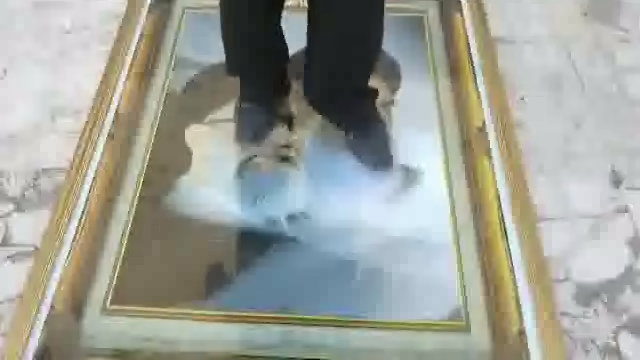
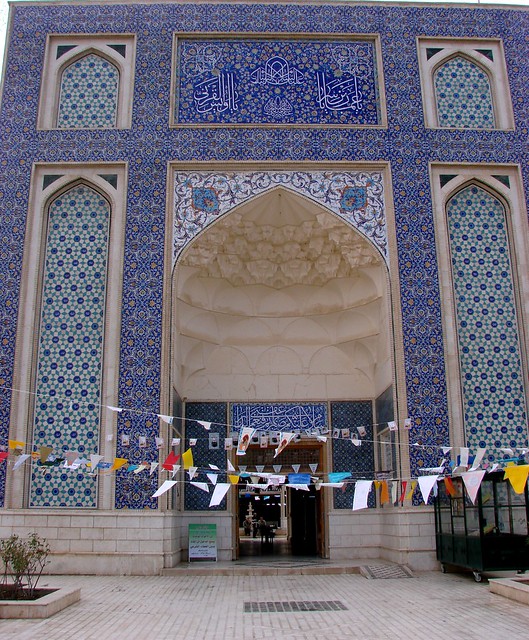
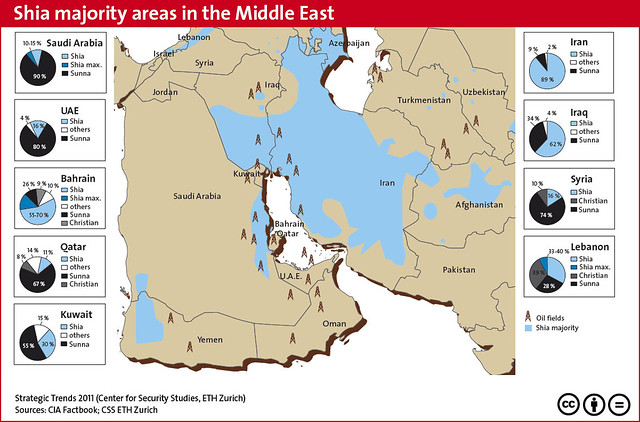

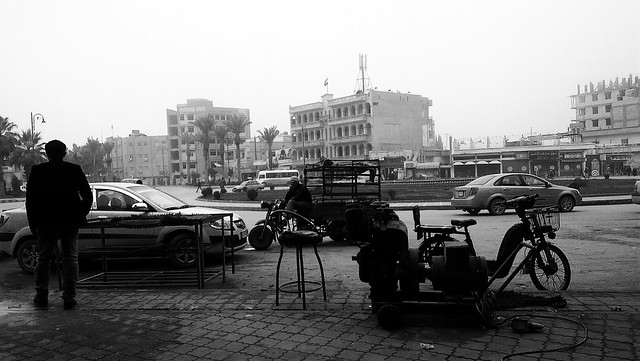
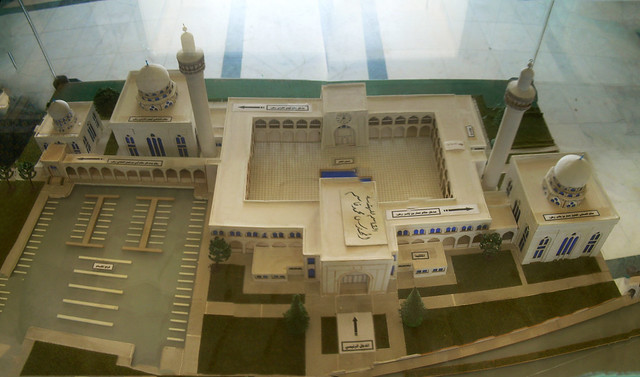


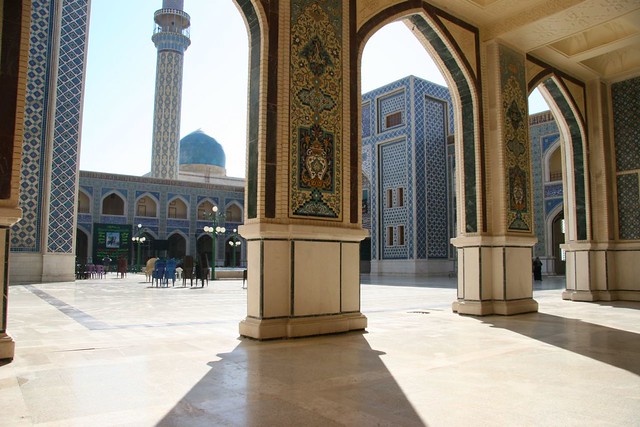
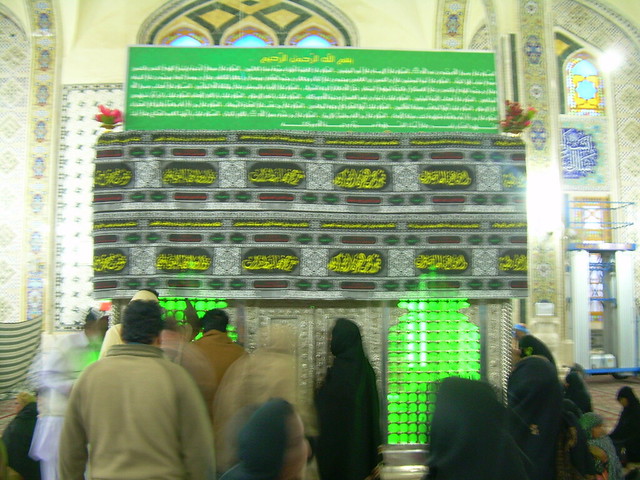
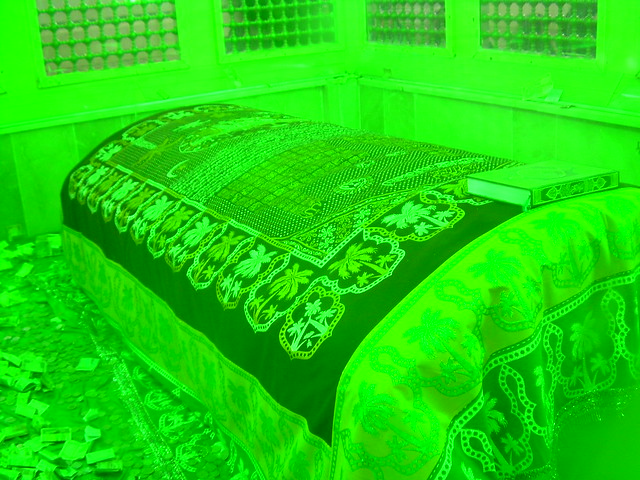
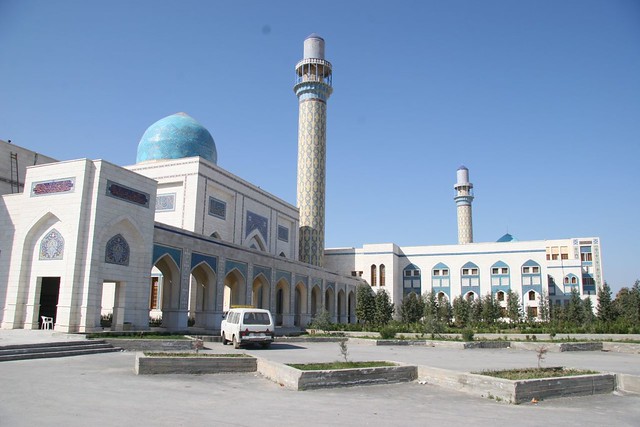
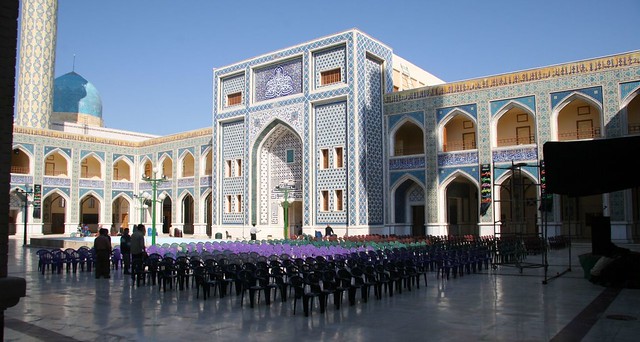
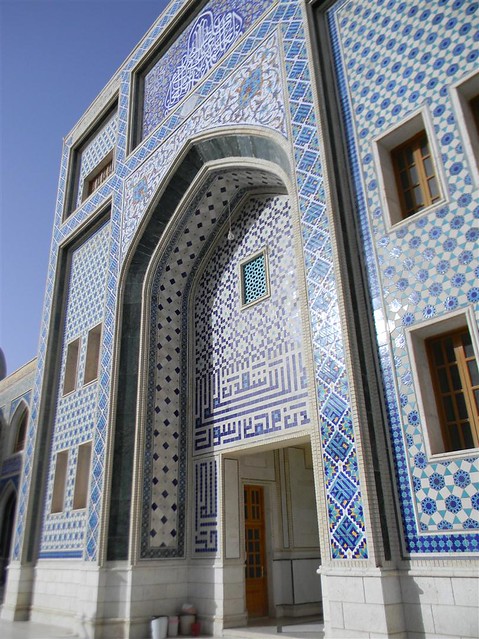

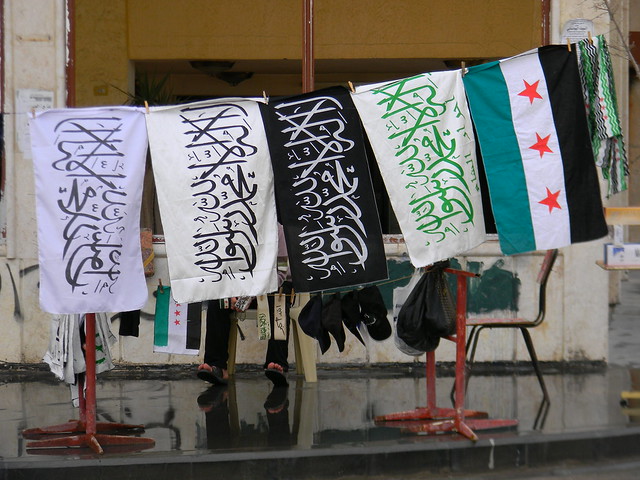

No comments:
Post a Comment